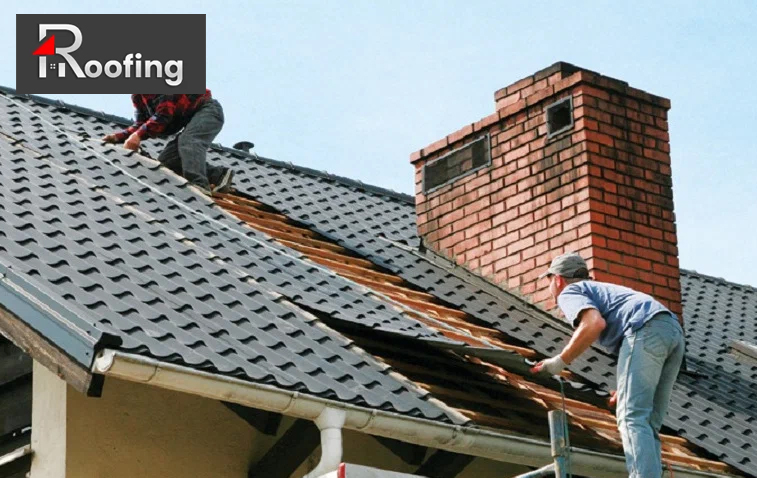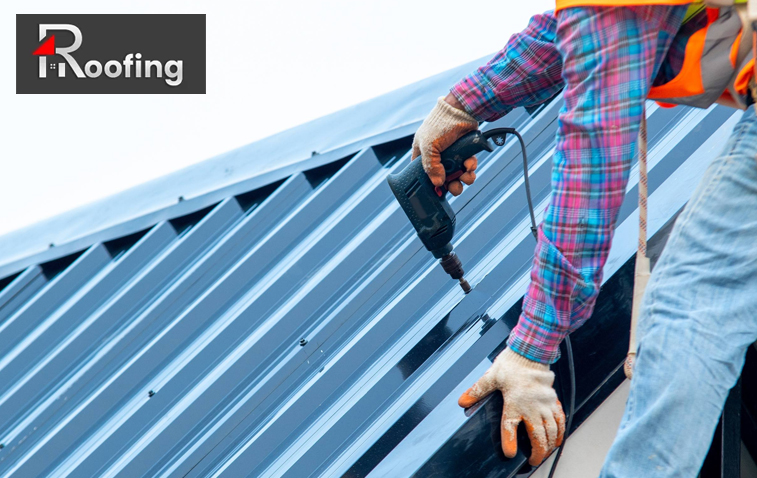Keep It Strong: 6 Tips for Maintaining Your Metal Roof
A metal roof is an excellent investment for any home or commercial building. Known for their durability, longevity, and energy efficiency, metal roofs can withstand harsh weather conditions and require less maintenance compared to other roofing materials. However, like any other part of your property, a metal roof still requires regular upkeep to maintain its strength and performance over time.
Proper maintenance can prevent minor issues from turning into significant problems, ensuring that your metal roof continues to protect your home effectively. Here are six essential tips for metal roof maintenance to keep it in top condition for years to come.

Regular Inspections
Regular inspections are crucial for metal roof maintenance. They help identify potential issues before they become major problems, allowing you to spot early signs of damage, wear, or other concerns that could compromise your roof’s integrity.
Key Actions:
- Visual Inspection: Perform a visual inspection from the ground to look for any visible signs of damage such as rust, dents, loose or missing fasteners, and debris accumulation. Use binoculars if necessary to get a closer look without having to climb onto the roof. Visual inspections should also include checking for uneven surfaces that may indicate underlying issues.
- Roof Access: If it’s safe to do so, access the roof to get a closer look. Check for any scratches, punctures, or other damage that might not be visible from the ground. Be cautious and use proper safety equipment when accessing the roof. Look for signs of standing water, which can indicate drainage issues.
- Post-Storm Check: Inspect the metal roof after severe weather and perform regular maintenance to address damage caused by wind, debris, or hail. Look for signs of damage that may have been caused by wind, falling branches, or other debris. Severe weather can exacerbate small problems, turning them into significant issues if not addressed promptly.
Implementation Tips:
- Seasonal Checks: Schedule regular inspections at least twice a year, ideally in the spring and fall, to coincide with changes in weather and potential stress on the roof. These checks help prepare the roof for upcoming seasonal weather patterns.
- Document Findings: Keep a record of your inspections, noting any issues found and the actions taken to address them. This documentation can be useful for future maintenance and potential warranty claims. Photographic evidence can be particularly helpful.
- Professional Help: Consider hiring a professional to conduct a thorough inspection if you are unsure about what to look for or if accessing the roof yourself is not safe. Professionals have the tools and experience to identify subtle issues that may not be apparent to an untrained eye.
Keep It Clean
Regular cleaning is essential for metal roof maintenance, preserving its appearance and preventing damage. Accumulated dirt, debris, and organic matter can lead to mold growth, staining, and corrosion.
Key Actions:
- Remove Debris: Regularly remove leaves, branches, and other debris from the roof surface and gutters. This prevents water from pooling and reduces the risk of rust and other damage. Debris can hold moisture against the roof, which can lead to corrosion over time.
- Wash the Roof: Clean the roof with a gentle detergent solution and a soft brush or sponge. Avoid using abrasive materials or high-pressure washers, which can damage the protective coating on the metal. Regular washing can also help prevent algae and mold growth, which can discolor the roof.
- Check Gutters and Downspouts: Ensure that gutters and downspouts are clear of debris to facilitate proper water drainage. Blocked gutters can cause water to back up onto the roof, leading to potential damage. Ensure that downspouts direct water away from the foundation of the house.
Implementation Tips:
- Use the Right Cleaning Products: Choose cleaning products that are safe for metal roofs and do not contain harsh chemicals that can damage the coating. Mild, biodegradable detergents are often a good choice.
- Safety First: Take proper safety precautions when cleaning the roof, such as using a stable ladder, wearing non-slip shoes, and securing yourself with a harness if necessary. Always be mindful of weather conditions to avoid accidents.
- Routine Maintenance: Incorporate roof cleaning into your regular maintenance routine to prevent buildup and ensure the roof remains in good condition. Regular maintenance can also reveal hidden problems before they become serious.
Address Rust and Corrosion Promptly
Rust and corrosion can significantly reduce the lifespan of a metal roof if not addressed promptly. Early detection and treatment are key to preventing extensive damage.
Key Actions:
- Identify Rust Spots: During inspections, look for any signs of rust or corrosion on the roof surface, especially around fasteners, seams, and areas where water may accumulate. Rust spots may appear as reddish-brown discolorations.
- Remove Rust: Use a wire brush or sandpaper to remove rust spots. Be gentle to avoid scratching the surrounding area. Once the rust is removed, clean the area thoroughly.
- Apply Protective Coating: After removing rust, apply a rust-inhibitive primer and a protective coating to the affected area to prevent further corrosion. Make sure the coating matches the existing roof color for a seamless look. These coatings provide an extra layer of protection against moisture.
Implementation Tips:
- Regular Checks: Regularly check for new rust spots, especially after heavy rain or snow, as moisture can accelerate the corrosion process. Early detection and treatment are crucial.
- Quality Products: Use high-quality rust-inhibitive products designed for metal roofs to ensure effective protection and longevity. Follow the manufacturer’s instructions for the best results.
- Preventative Measures: Consider applying a protective coating to the entire roof if it is prone to rust. This can provide an added layer of defense against moisture and corrosion. Regular maintenance of protective coatings can extend the life of your roof.

Maintain Proper Ventilation
Proper ventilation is essential for preventing moisture buildup and ensuring the longevity of your metal roof. Poor ventilation can lead to condensation, which can cause rust, mold, and other issues.
Key Actions:
- Check Ventilation Systems: Inspect your attic and roof ventilation systems to ensure they are functioning correctly. Look for any blockages or damage that could impede airflow. Proper ventilation helps regulate temperature and moisture levels.
- Install Ventilation: If your roof lacks adequate ventilation, consider installing ridge vents, soffit vents, or other ventilation solutions to improve airflow and reduce moisture buildup. Properly installed vents can significantly enhance the performance of your roofing system.
- Monitor Humidity Levels: Keep an eye on the humidity levels in your attic. High humidity can indicate poor ventilation and increase the risk of condensation and mold growth. Use a hygrometer to monitor humidity levels and take action if they become too high.
Implementation Tips:
- Regular Inspections: Include ventilation checks in your regular roof inspections to ensure systems are functioning properly and are not obstructed. Regular maintenance can prevent serious problems.
- Professional Assessment: Consult with a roofing professional if you are unsure about the adequacy of your current ventilation system or need recommendations for improvements. Professionals can provide tailored solutions to meet your specific needs.
- Balanced Ventilation: Ensure that your ventilation system provides balanced airflow between intake and exhaust vents to promote efficient air circulation. Balanced ventilation helps maintain a consistent temperature and reduces moisture buildup.
Secure Fasteners and Seams
Loose or missing fasteners and damaged seams can compromise the integrity of your metal roof, leading to leaks and other issues. Regularly inspecting and securing these components is vital for maintaining a watertight roof.
Key Actions:
- Check Fasteners: Inspect screws, nails, and other fasteners for signs of loosening or damage. Tighten any loose fasteners and replace any that are missing or corroded. Properly secured fasteners help maintain the structural integrity of the roof.
- Inspect Seams: Examine the seams and joints of the roof for any signs of separation or damage. Pay close attention to areas where different sections of the roof meet, as these are common points for leaks. Ensure that seams are properly sealed to prevent water infiltration.
- Seal Gaps: Use a high-quality sealant designed for metal roofs to seal any gaps or seams that show signs of wear. Ensure that the sealant is compatible with your roof material. Properly sealed gaps help prevent leaks and moisture damage.
Implementation Tips:
- Regular Maintenance: Incorporate fastener and seam inspections into your regular maintenance routine to address issues promptly. Regular maintenance helps prevent small problems from becoming major issues.
- Weather Considerations: Check fasteners and seams after severe weather events, as wind, hail, and heavy snow can cause damage. Severe weather can loosen fasteners and damage seams, leading to potential leaks.
- Use Appropriate Tools: Use the right tools and materials for securing fasteners and sealing seams to ensure a durable and effective repair. Proper tools and techniques help ensure long-lasting repairs.

Prevent Ice Dams
Ice dams can form on metal roofs in cold climates, leading to water backup and potential leaks. Taking steps to prevent ice dams can protect your roof and home from water damage.
Key Actions:
- Ensure Proper Insulation: Make sure your attic is well-insulated to prevent heat from escaping through the roof. Proper insulation helps maintain a consistent roof temperature, reducing the risk of ice dams. Insulation helps keep warm air inside the home, preventing snow on the roof from melting and refreezing at the eaves.
- Improve Ventilation: Adequate ventilation in the attic and roof space helps keep the roof surface cool, preventing snow from melting and refreezing at the eaves. Proper ventilation helps maintain a consistent roof temperature.
- Remove Snow: Safely remove snow from the roof after heavy snowfall to prevent excessive buildup. Use a roof rake or hire a professional if necessary to avoid damaging the roof. Removing snow helps prevent ice dams from forming and reduces the weight on the roof.
Implementation Tips:
- Install Ice and Water Shield: Consider installing an ice and water shield membrane under the roofing material, especially in vulnerable areas such as eaves and valleys. This provides an additional layer of protection against water infiltration. Ice and water shields help prevent leaks from ice dams.
- Regular Monitoring: Keep an eye on the roof during winter months, especially after heavy snowfalls, to detect and address ice dams early. Early detection and removal of ice dams can prevent serious damage.
- Professional Advice: Consult with a roofing professional for recommendations on preventing ice dams specific to your climate and roof structure. Professionals can provide tailored solutions to meet your specific needs.
Metal roof maintenance roof is essential for ensuring its longevity, performance, and appearance. By conducting regular inspections, keeping the roof clean, addressing rust and corrosion promptly, maintaining proper ventilation, securing fasteners and seams, and preventing ice dams, you can keep your metal roof in top condition for years to come. These proactive maintenance tips will help you protect your investment and enjoy the benefits of a durable, energy-efficient roof that stands up to the elements.